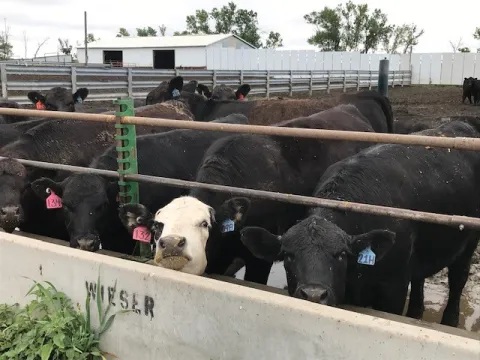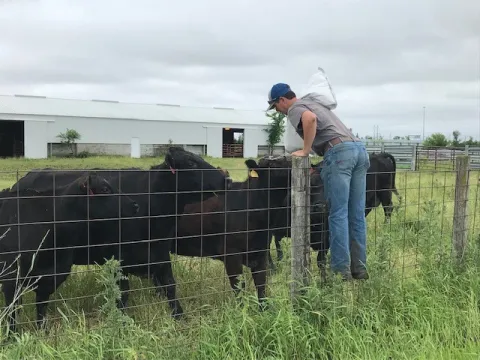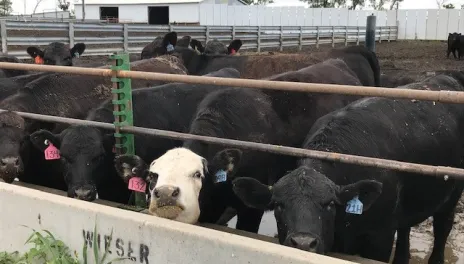Beef Barn breeds excellence
by Darla White
Administrative Secretary
One of the barns at NDSU is known by a variety of names: The Beef Teaching & Research Unit, the Beef Cattle Research and Teaching Center (not to be confused with the Beef Cattle Research Complex), or the NDSU Beef Cattle Barn. Manager Garrett Havelka, however, simply calls it the Beef Barn. It is home to about 250 cattle.

Historically the beef herd contained numerous registered breeds, but it’s now been narrowed down to Angus and Simmental. These are two of the most common breeds of beef cattle in North Dakota. The barn is home to all the cattle during the winter, while most of the cows and calves spend the warmer months at the Ekre Grassland Preserve southwest of Kindred.
Like the rest of the NDSU barns, the Beef Unit assists in the teaching mission of the university. Students in classes including Introduction to Animal Sciences, Livestock Production, and Bovine Pregnancy Diagnosis and Ultrasonography come to the site to do such things as practice diagnoses or help with injections. Vet tech classes also visit the Beef Barn to get practice with animal handling.
Generally, 160 calves are born each spring. Of those, 120 will be sold at 14-18 months of age after reaching a finishing weight in the Beef Unit’s feedlot. The remaining 40 join the cow herd. The best cows stay in the herd for a while, with the oldest one now at 13 years old.
While most North Dakota beef producers go through one calving season in the spring, the NDSU Beef Barn makes sure to have a fall calving season as well. “We do 20 fall calves so we always have the different phases of cattle here for the classes,” Garrett says. That helps students get equal opportunities whether they are in the fall or spring semester classes.

The Beef Barn doesn’t just invite students to learn on site – it is happy to bring the cows to them. Havelka takes finished cattle on the road for popular events such as Moos, Ewes and More, Little “I,” Kiddie Days, and the Saddle & Sirloin Paddy Drop Fundraiser. Cattle also go to Shepperd Arena for livestock judging and meat grading.
Garrett is aided in his duties by about half a dozen student workers during the school year. In fact, he himself started as a student worker his first semester as an undergraduate in Fall 2017. He was hired as the manager in December 2020. “I got a job here and never really left,” he jokes. One little-known amenity at the Beef Barn is a basketball court located in the hay loft that can help students pass the time during calving season.
The Beef Barn has been involved in less research since the BCRC opened in 2011. It still does some, however. For example, each spring it helps with a 10-day grazing study in a riparian area at the Ekre Grassland Preserve, and there are also some studies involving virtual fencing run by Associate Professor Miranda Meehan (see nearby article).
The goal of the Beef Unit is to always use best practices and keep improving the cow herd and the facility. “We are trying to be a good model for North Dakota producers,” Garrett says. No matter what you call it, the Beef Barn will continue to play an important role in the mission of the university and Department of Animal Sciences.
